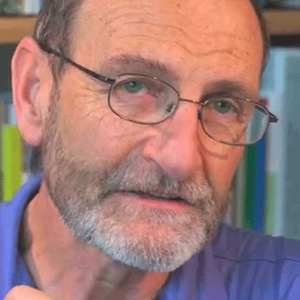Drones provide important humanitarian advantages in catastrophe aid, rescue operations, and scientific analysis of every kind. As the expertise has developed, the makes use of for drones in analysis are regularly increasing. Now mapping and photogrammetry specialists Pix4D, alongside with French drone producer Parrot, have introduced the winners of their local weather innovation grant. The grant is designed “to help foster innovation around the impact of global climate change.”
The distinctive data-gathering capabilities of drones make them a helpful new device in efforts to mitigate local weather change. Pix4D and Parrot selected 6 winners from over 250 proposals. “We selected six projects, chosen on novelty, scientific merit, and team experience,” says the announcement. “We also considered advanced degrees, formal association with educational organizations or institutions, and a strong record of climate change research.”
Grant winners obtain a Parrot Disco-Pro AG that embeds a Parrot Sequoia multispectral sensor, a 1- yr Pix4D software program license, and coaching to assist them transfer their analysis ahead.
The Winning Projects
Winners are primarily based within the U.S., Europe, and the African continent.
 Robert M. Pringle, and Assistant Professor at Princeton University, received for his proposal to guage the position of local weather in modulating wildlife extinctions in African drylands. “We want to use drone-based ecological monitoring to incorporate regular low-altitude image surveys of our plots into our regular long-term monitoring program,” says Pringle. “Specifically, we want to measure woody-plant biomass, phenology, water stress, net aboveground productivity, and canopy architecture. All of which are impossible to measure with current satellite technology and the best available ground-based methods are exceedingly time-consuming and frustratingly imprecise to boot.”
Robert M. Pringle, and Assistant Professor at Princeton University, received for his proposal to guage the position of local weather in modulating wildlife extinctions in African drylands. “We want to use drone-based ecological monitoring to incorporate regular low-altitude image surveys of our plots into our regular long-term monitoring program,” says Pringle. “Specifically, we want to measure woody-plant biomass, phenology, water stress, net aboveground productivity, and canopy architecture. All of which are impossible to measure with current satellite technology and the best available ground-based methods are exceedingly time-consuming and frustratingly imprecise to boot.”
 Dr. Chris Field of Stanford University plans to work on drone-based detection of grassland phenology, productiveness, and composition in relation to local weather. “Our goal is to use a drone-mounted camera and multispectral sensor to map and monitor temporal and spatial variation in grassland in order to understand the role of climate variation in driving changes in grassland composition,” says Field. “Specifically we propose to examine the extent to which changes in grassland composition—such as the balance of grasses vs forbs, annuals vs perennials, and invasive vs native species—are due to weather and microclimate-driven changes in phenology and/or productivity.”
Dr. Chris Field of Stanford University plans to work on drone-based detection of grassland phenology, productiveness, and composition in relation to local weather. “Our goal is to use a drone-mounted camera and multispectral sensor to map and monitor temporal and spatial variation in grassland in order to understand the role of climate variation in driving changes in grassland composition,” says Field. “Specifically we propose to examine the extent to which changes in grassland composition—such as the balance of grasses vs forbs, annuals vs perennials, and invasive vs native species—are due to weather and microclimate-driven changes in phenology and/or productivity.”
 Gillian Maggs-Kölling of the Gobabeb Research and Training Centre in Namibia will research lichen fields within the desert. “Lichens are small, highly complex organisms… They occur across vast expanses of desert plains and are often difficult to access. Crustose lichens… especially cannot be discerned from the surrounding matrix of desert gravel. This makes conventional RGB-photography, in particular aerial RGB-photography, totally unsuitable for monitoring lichen growth,” says Maggs-Kölling. “…Our long-term aim could be to attempt and mannequin productiveness of the lichen-fields primarily based on the multi-spectral bands (particularly the near-infrared and crimson edge bands), and on this manner monitor the vigour and progress of the lichen fields. These information may inform land administration practices within the uranium-rich Central Namib Desert.“
Gillian Maggs-Kölling of the Gobabeb Research and Training Centre in Namibia will research lichen fields within the desert. “Lichens are small, highly complex organisms… They occur across vast expanses of desert plains and are often difficult to access. Crustose lichens… especially cannot be discerned from the surrounding matrix of desert gravel. This makes conventional RGB-photography, in particular aerial RGB-photography, totally unsuitable for monitoring lichen growth,” says Maggs-Kölling. “…Our long-term aim could be to attempt and mannequin productiveness of the lichen-fields primarily based on the multi-spectral bands (particularly the near-infrared and crimson edge bands), and on this manner monitor the vigour and progress of the lichen fields. These information may inform land administration practices within the uranium-rich Central Namib Desert.“
 Holly P. Jones of Northern Illinois University will use drones to watch grassland responses to shifting local weather and restoration. “A multispectral camera will significantly reduce our workload because we would no longer have to overlay these images by hand to calculate NDVI and other measurements,” says Jones. “This grant will scale our pilot-project and look at how restoration interacts with climate and allow us to help managers forecast what that will mean for future prairie restorations.”
Holly P. Jones of Northern Illinois University will use drones to watch grassland responses to shifting local weather and restoration. “A multispectral camera will significantly reduce our workload because we would no longer have to overlay these images by hand to calculate NDVI and other measurements,” says Jones. “This grant will scale our pilot-project and look at how restoration interacts with climate and allow us to help managers forecast what that will mean for future prairie restorations.”
 Lluís Brotons of InForest JRU in Spain will monitor insect pest impacts in Mediterranean forests. “We want to quantitatively assess the impact of the pine processionary moth on pine forests at the forest stand scale (10-100 ha),” says Brotons. “Satellite imagery has strong constraints on the quantity and quality of information. RGB imagery may not be adequate to conduct impact assessment across space and time. Multispectral data (i.e. infrared) allows a much better comparison across images taken in different locations and times.”
Lluís Brotons of InForest JRU in Spain will monitor insect pest impacts in Mediterranean forests. “We want to quantitatively assess the impact of the pine processionary moth on pine forests at the forest stand scale (10-100 ha),” says Brotons. “Satellite imagery has strong constraints on the quantity and quality of information. RGB imagery may not be adequate to conduct impact assessment across space and time. Multispectral data (i.e. infrared) allows a much better comparison across images taken in different locations and times.”
 Jeffrey Kerby of Dartmouth College in Germany, is engaged on “Climate-driven greening of the Siberian Arctic: Multispectral sensors on UAVs bridge ground to satellite scaling challenges.” “Multispectral data will allow for direct radiometric comparisons with vegetation change patterns captured by satellite data. This grant offers huge advantages: discrete spectral bands, direct measures of incoming solar radiation, integrated IMU data, integrated GPS data, streamlined workflow,” says Kerby. “This built-in system (digital camera + software program) permits for simpler exploration of the connection between spectral and structural influences on scaling the results of how vegetation responds to local weather change within the Arctic.”
Jeffrey Kerby of Dartmouth College in Germany, is engaged on “Climate-driven greening of the Siberian Arctic: Multispectral sensors on UAVs bridge ground to satellite scaling challenges.” “Multispectral data will allow for direct radiometric comparisons with vegetation change patterns captured by satellite data. This grant offers huge advantages: discrete spectral bands, direct measures of incoming solar radiation, integrated IMU data, integrated GPS data, streamlined workflow,” says Kerby. “This built-in system (digital camera + software program) permits for simpler exploration of the connection between spectral and structural influences on scaling the results of how vegetation responds to local weather change within the Arctic.”
 Unmanned Aerial Vehicle The latest drone news
Unmanned Aerial Vehicle The latest drone news




